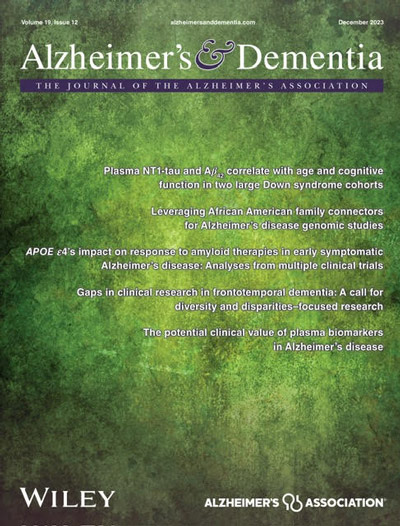APOE ε4–associated heterogeneity of neuroimaging biomarkers across the Alzheimer's disease continuum
Abstract
INTRODUCTION
While the role of apolipoprotein E (APOE) ε4 in Alzheimer's disease (AD) susceptibility has been studied extensively, much less is known about the differences in disease presentation in APOE ε4 carriers versus non-carriers.
METHODS
To help elucidate these differences, we performed a broad analysis comparing the regional levels of six different neuroimaging biomarkers in the brains of APOE ε4 carriers versus non-carriers who participated in the Alzheimer's Disease Neuroimaging Initiative (ADNI).
RESULTS
We observed significant APOE ε4–associated heterogeneity in regional amyloid beta deposition, tau accumulation, glucose uptake, brain volume, cerebral blood flow, and white matter hyperintensities within each AD diagnostic group. We also observed important APOE ε4–associated differences in cognitively unimpaired individuals who converted to mild cognitive impairment/AD versus those who did not convert.
DISCUSSION
This observed heterogeneity in neuroimaging biomarkers between APOE ε4 carriers versus non-carriers may have important implications regarding the prevention, diagnosis, and treatment of AD in different subpopulations.
Highlights
- An extensive study was performed on the apolipoprotein E (APOE) ε4–associated heterogeneity in neuroimaging biomarkers from the Alzheimer's Disease Neuroimaging Initiative.
- Robust APOE ε4–associated increases in amyloid beta (Aβ) deposition throughout the brain, in every diagnostic group, were observed.
- APOE ε4–associated increases in tau pathology, decreases in glucose uptake, and increases in brain atrophy, which expand in regional scope and magnitude with disease progression, were observed.
- Significant sex- and age-related differences in APOE ε4–associated neuroimaging biomarker heterogeneity, with overall increases in pathological presentation in female APOE ε4 carriers, were observed.
- Regional differences in Aβ deposition, tau accumulation, glucose uptake, ventricle size, and white matter hyperintensities were observed in cognitively normal participants who converted to mild cognitive impairment/Alzheimer's disease, which may hold potential predictive value.


 求助内容:
求助内容: 应助结果提醒方式:
应助结果提醒方式:


